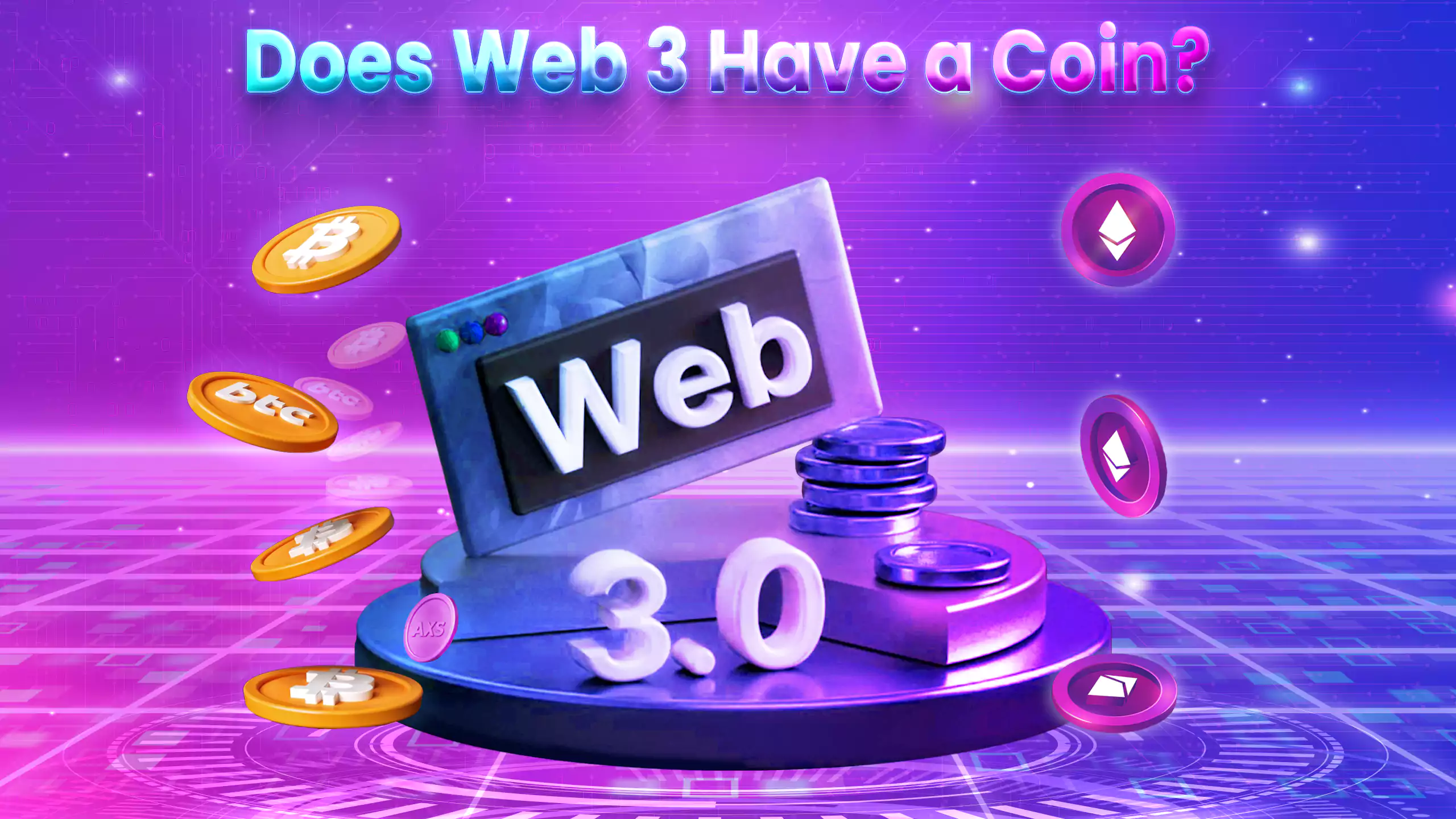Advances in blockchain technology have accelerated a transition from Web 2.0 to Web 3.0. But let's go back in time for a moment.
In the late 1990s, the term "Web1" was established to designate the most popular internet and messaging platforms. Since then, the Internet's evolution is what we now refer to as Web2. The emergence of new social media platforms including Spotify, Facebook, Instagram, and Tiktok has been particularly notable during this period of Internet transformation.
However, in 2014, Ethereum & Polkadot co-founder Gavin Wood published a blog post titled "Apps: What Web 3.0 Looks Like," He introduced the term "Web3". Recent trends in the tech space suggest we're already in this dispensation, and like its enabling blockchain technology, Web 3.0 has its cryptocurrency. Quite likely when you think about it. But, how true is this position?
By the end of this article, you'll have found your answer.
What is Web3?
In the main, Web 3.0 is the third generation of the Internet for websites and applications that are focused on leveraging machine-based understanding of data to create data-driven, open, and connected websites. It was previously referred to as Semantic Web, following its design objective of categorizing and storing data in a way that helps teach the system what specific data the user needs.
It is marked by decentralization and token-based economies with increased data security, user privacy, and scalability. Web 3.0 features stronger AI, more open-source software, data mining, microformats, and peer-to-peer (P2P) technologies like the blockchain.
Web 3.0 networks operate through decentralized protocols, suggesting a convergence with blockchain technology and cryptocurrency. This means increased interoperability, smart contract-driven governance, and P2P data file storage will impact the new internet age and the economies of the Internet.
For instance, NFTs (Non-Fungible Tokens) was predicted to be a hot topic in the crypto industry in 2021. And true, as Dune Analytics data reported, OpenSea's user base has grown from around 100,000 to over 1 million since 2021. Again, users who purchased NFTs last year received additional benefits on their purchases.
Another key feature of the Web3 period is that users benefit from artists and creators by donating to them. This new Internet, dubbed "Web3," is run by tokens and belongs to its users and producers.
Now, to the nitty-gritty: does Web3 Have a coin?
Does Web3 Have a Coin?
Yes, Web3 does have a coin. And here's how.
Recall that Web 3.0 will be built on blockchain technology and facilitated by cryptocurrencies and more inclusive payment services. Cryptocurrencies in this internet era are referred to as Web 3.0 coins.
The gist of Web 3.0 is to give users control over their digital content, enhanced by a decentralized infrastructure and a creator economy. The creator economy features an age where users are financially rewarded for bringing digital content or value to the community.
Web 3.0 coins are here. So, what are the top coins to invest in, and what category of creators benefit from them?
5 Best Web3 Cryptocurrencies to Invest in 2022
The following are some of the best web3 coins to buy in 2022:
DOT (Polkadot)
DOT ranks first among today's top five web3 coins to invest in, being the 10th-largest coin by market valuation ($21 billion) and a current value of $24.36 per coin. DOT is the native currency of Polkadot, a platform that connects blockchain by allowing value exchange across networks like Ethereum and Blockchain that are previously deemed incompatible.
In 2016, the Web3 decentralized platform, with the support and guidance of the Web3 Foundation, was developed by three founders namely, (Gavin Wood, Robert Habermeier, and Peter Czaban). It is a system for Web3 that empowers the user.
"Relay Chain" is Polkadot's primary chain, while "parachains" are chains that are attached to the central chain and accessible through bridges towards other networks for increased scalability.
The first 5 parachains were launched in a few months and leading to a record high price of DOTs. With the release of more parachains this year, we should expect a rise in their price.
FIL (FileCoin)
FIL has a total value of $4.2 billion and is valued at $28.21 per coin. It is the native currency of Filecoin, a decentralized economy that is focused on making the web more simple and sustainable.
Since its launch in 2014, the project has offered users the opportunity to pay storage miners in FIL tokens in exchange for the confidentiality of their data.
They initiated FileCoin Plus in October of last year to connect storage providers with authenticated customers. Furthermore, a tweet from Filecoin's Official Twitter handle stated that the Token-based social token platform Inflow music would be circulated in February 2022.
THETA (Theta Network)
Following a peak in the valuation of $14.28 in April, last year, THETA became the 40th largest cryptocurrency by stock price, according to CoinMarketCap ($4 billion), totaling a price of $4.01 per coin.
The decentralized streaming media platform was built by Mitch Liu and Jieyi Long in 2017 and employ a web of several computers around the world to offer high-quality video.
Theta Network will provide NFT airdrops and a multimedia network based on NFTs on its website in 2022.
HNT (Helium)
After reaching its peak of $52.71 in November Last year, HNT is presently the 46th most valuable cryptocurrency by stock value ($3.3 billion), with a cost of $31.45 per coin.
IoT devices serving as hotspots can generate HNT, a cryptocurrency that can be obtained by transmitting data from IoT devices. Shawn Fanning, Amir Haleem, and Sean Carey Founded the Helium in 2013.
Just a few weeks ago at the Consumer Technology Association in Las Vegas, a 5G network builder named FreedomFi teamed up with the Helium team to form a new venture called Helium5.
BitTorrent (BTT)
BTT is a blockchain-based TRC-10 utility token that supports many of the most widely used decentralized networks and applications with a stock value of ($2.4 billion), BTT is the 54th largest cryptocurrency worth $0.002483 per coin, after its spike of $0.01 last year April.
According to its official website, the TRON Foundation procured the Bram Cohen-founded project in 2019 and has become the largest file-sharing system that is widely used around the world. For this, seeding files is a prerequisite for obtaining the native token BTT.
What Crypto Platforms Will Win The Web3 Race?
The Web 3 race, like every other, requires stamina, grit, and inner potential. Web 3 platforms leading the race at the moment may not end up as winners, as scalability issues, high gas fees, volatilities, and other uncertainties pop up along the way.
However, based on their inner potential, design objective, and product offering, we have reasons to believe the following crypto platforms will lead the Web 3 race.
- Polkadot
- Decentraland
- Ethereum
Ethereum
Ethereum is the leading blockchain protocol for dApps solutions and marketplaces. Ethereum serves as the blank canvas with features you can combine to create Web 3.0 DApps. Already, Digix, Augur, Mak, and other dApps hosted on Ethereum are creating the new products and services that will define Web 3.
Again, the most successful apps on Ethereum are NFTs. Though they're relatively new, they're catching on with artists, creators, investors, and consumers, both as a store of value and evidence of unique, digital ownership.
This places Ethereum far ahead of the competition for Web 3 dominance. Though scalability and speed issues have favored the rise of rivals like Solana and Corda, Ethereum 2.0 is being built to address this.
Polkadot
Polkadot's design objective is communication and interoperability between blockchains. As described in the preceding section, it uses three main innovative components, bridges, parachains, and relay chains. Barely eight months after launch on May 26, 2020, it has recorded the 4th highest market cap in the blockchain industry, with over $15 billion. Its flexibility and usability for real-world use cases make it a potential Web 3.0 race winner.
Decentraland
Decentraland is a unique project that entered the spotlight in 2021. Not only because of its token economies but also because its Web 3 concepts revved up its market cap in the Q4 of 2021, making it the largest metaverse real estate marketplace. With a future-forward design that rewards users using NFTs with MANA, Decentraland joins our list of potential Web 3 race winners.
The recent hype and incredible figures behind metaverse real estate give Decentraland a decent lead in the new internet age. However, Decentraland's recent decision to integrate Web 3.0 concepts into its operation gives us more reasons to prospect a lead from the digital real estate giant.
However, in the end, there's no actual, sole winner. Instead, we'll have all the three — and of course, more — as the bigger frys and rivals continuously innovate to secure a spot up the chain.
Conclusion
Web 3.0 is here to stay. It opens a floodgate of opportunities for creators whose primary motivation will be coins and tokens. The five coins highlighted above have lost more than 30% since their all-time highs, but it wouldn't matter. Web 3.0 isn't a passing fad — it is here for the long haul.






